Antique portraits display the damaging effects of a form of deterioration called silver mirroring
Silver mirroring is a form of deterioration in gelatin silver prints where silver ions migrate to the surface of the gelatin emulsion, creating a shiny metallic effect when viewed at an angle. According to Conservation Wiki, silver mirroring is a natural occurrence in gelatin silver prints, and can be caused by age, acidity, and exposure to humidity.
Silver mirroring effects gelatin silver prints, but can also occur in negatives, albumen prints, and other photographic materials containing silver. In less severe cases, the photograph may look almost normal until viewed at an angle to the light, which allows metallic reflections or iridescent effects to be seen.
This video shows the appearance of silver mirroring on a photographic print
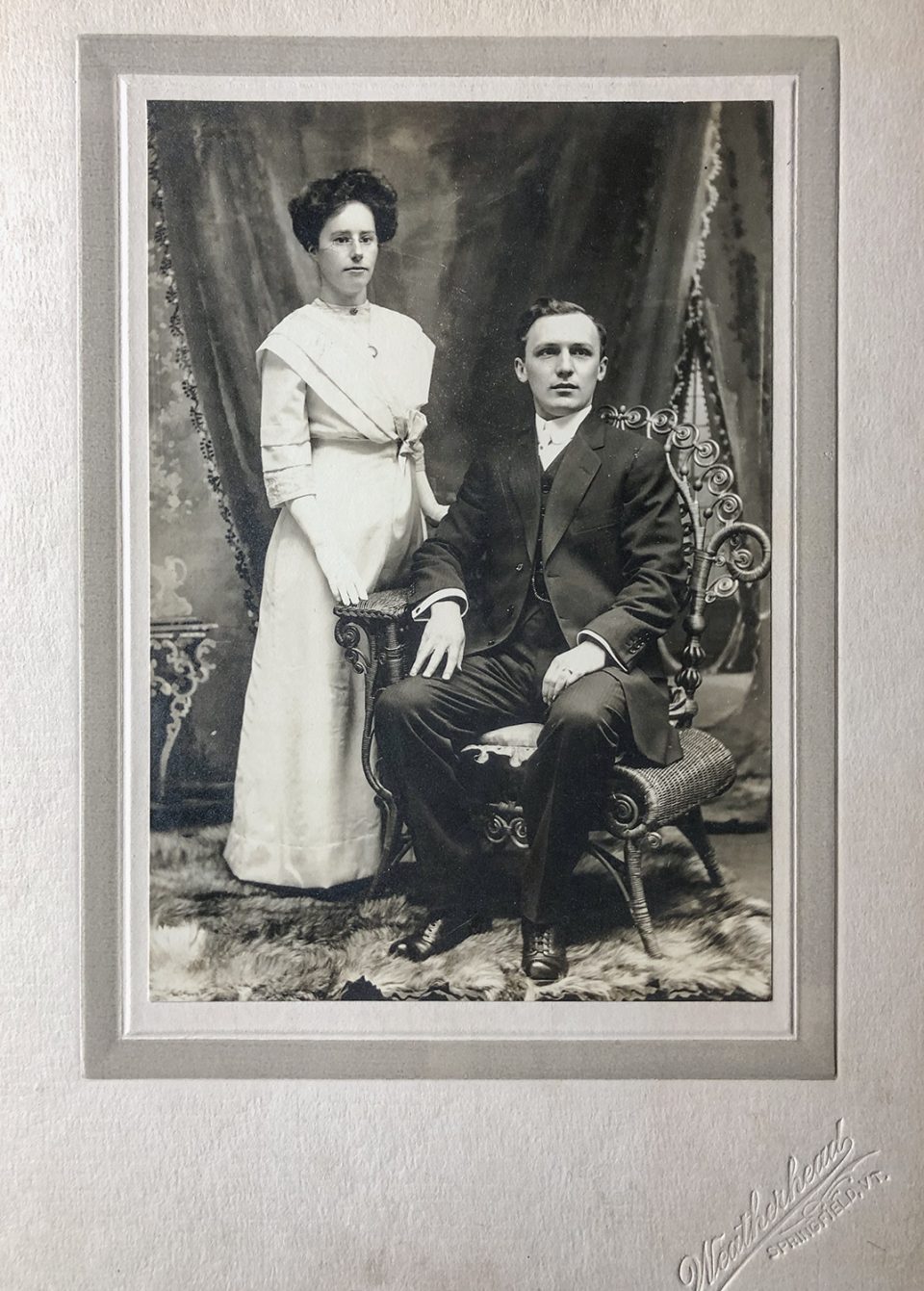
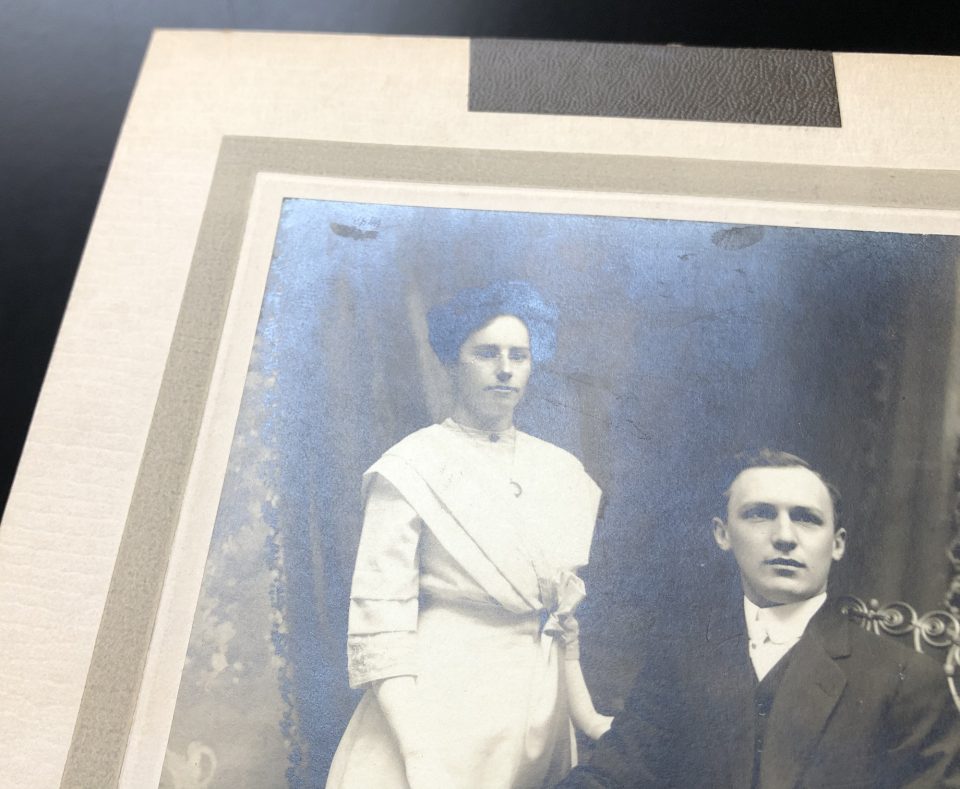
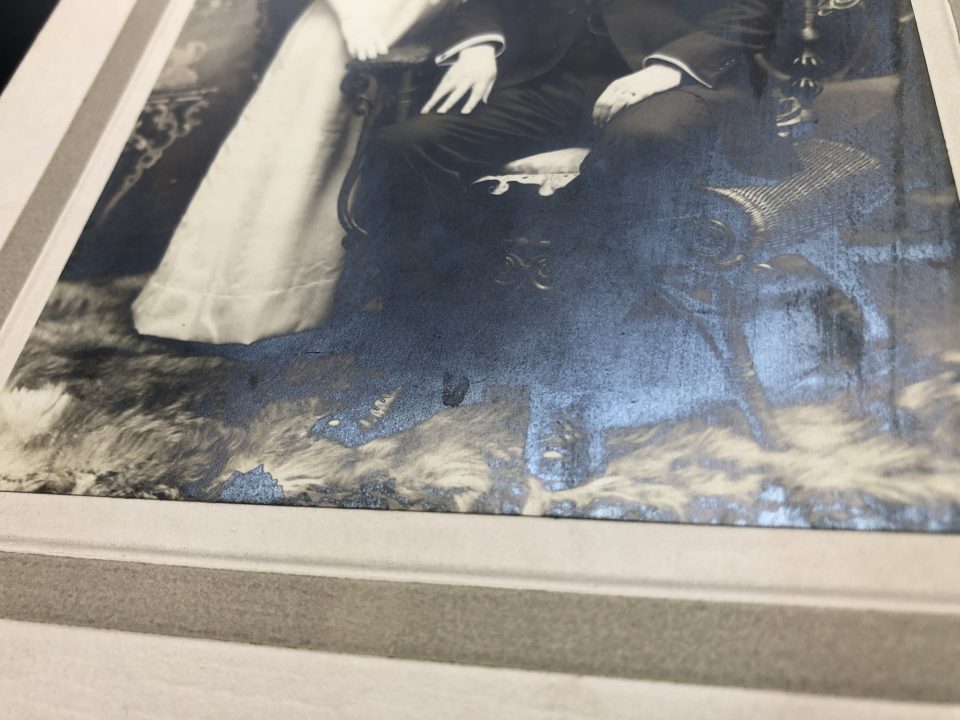
Snapshot of Two Sailors
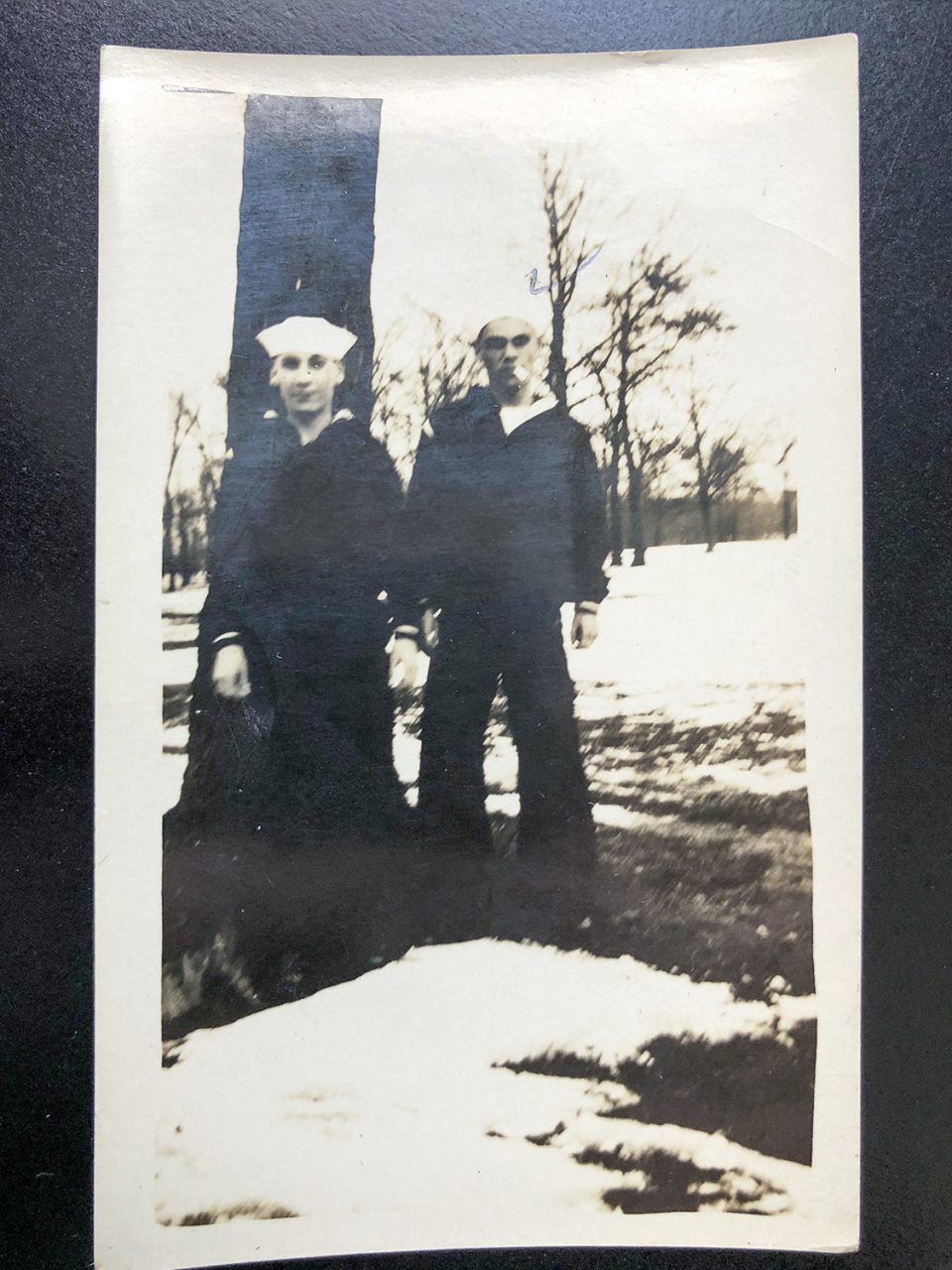
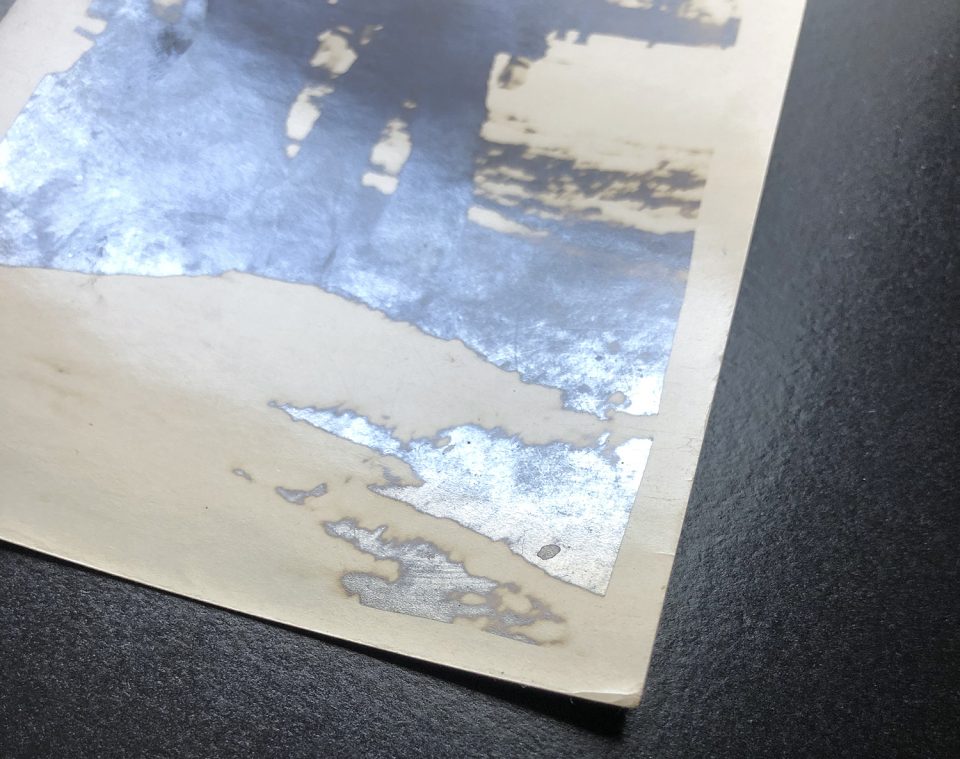
Early 1900s snapshot of a smiling woman standing in snow
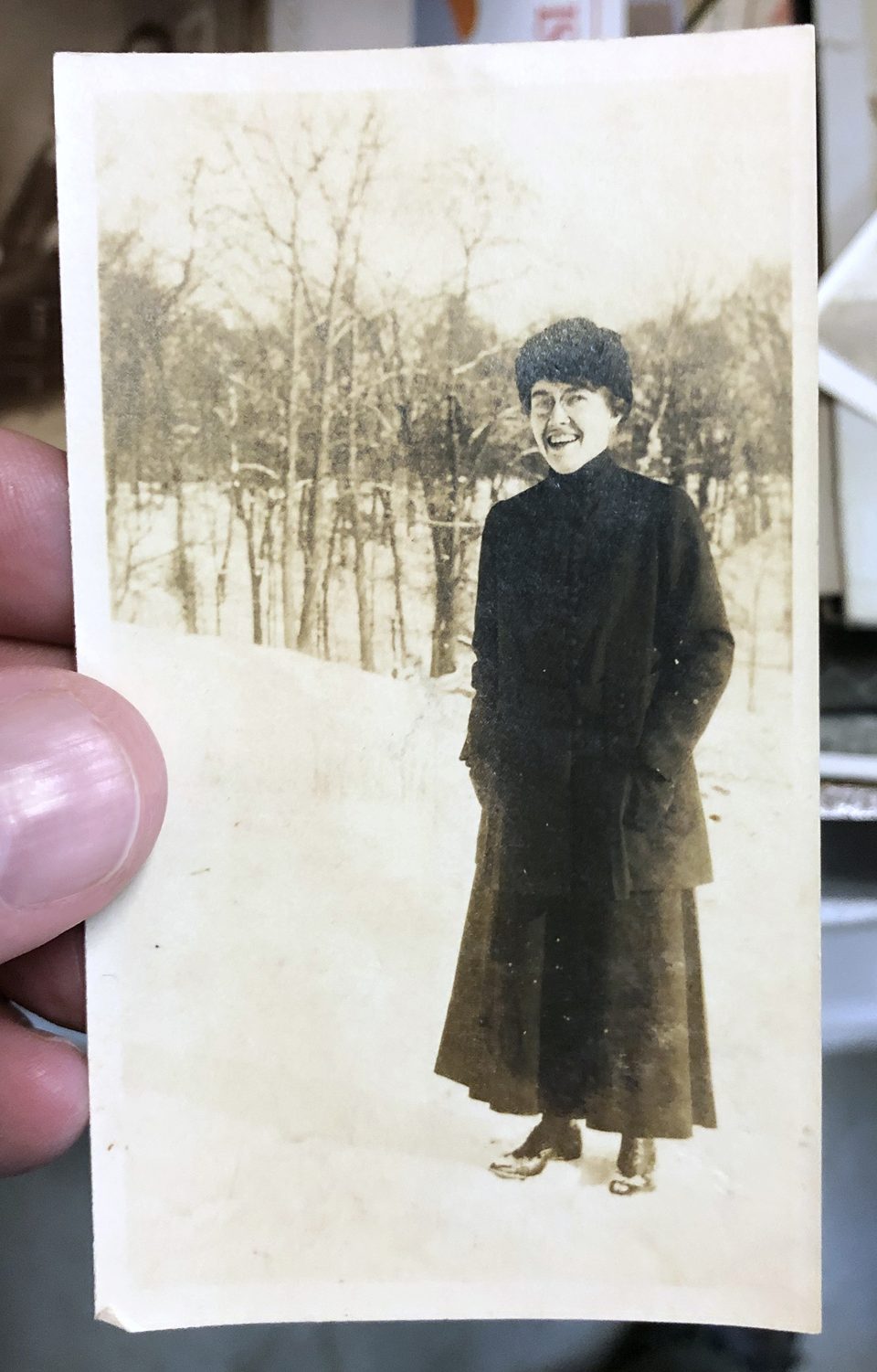
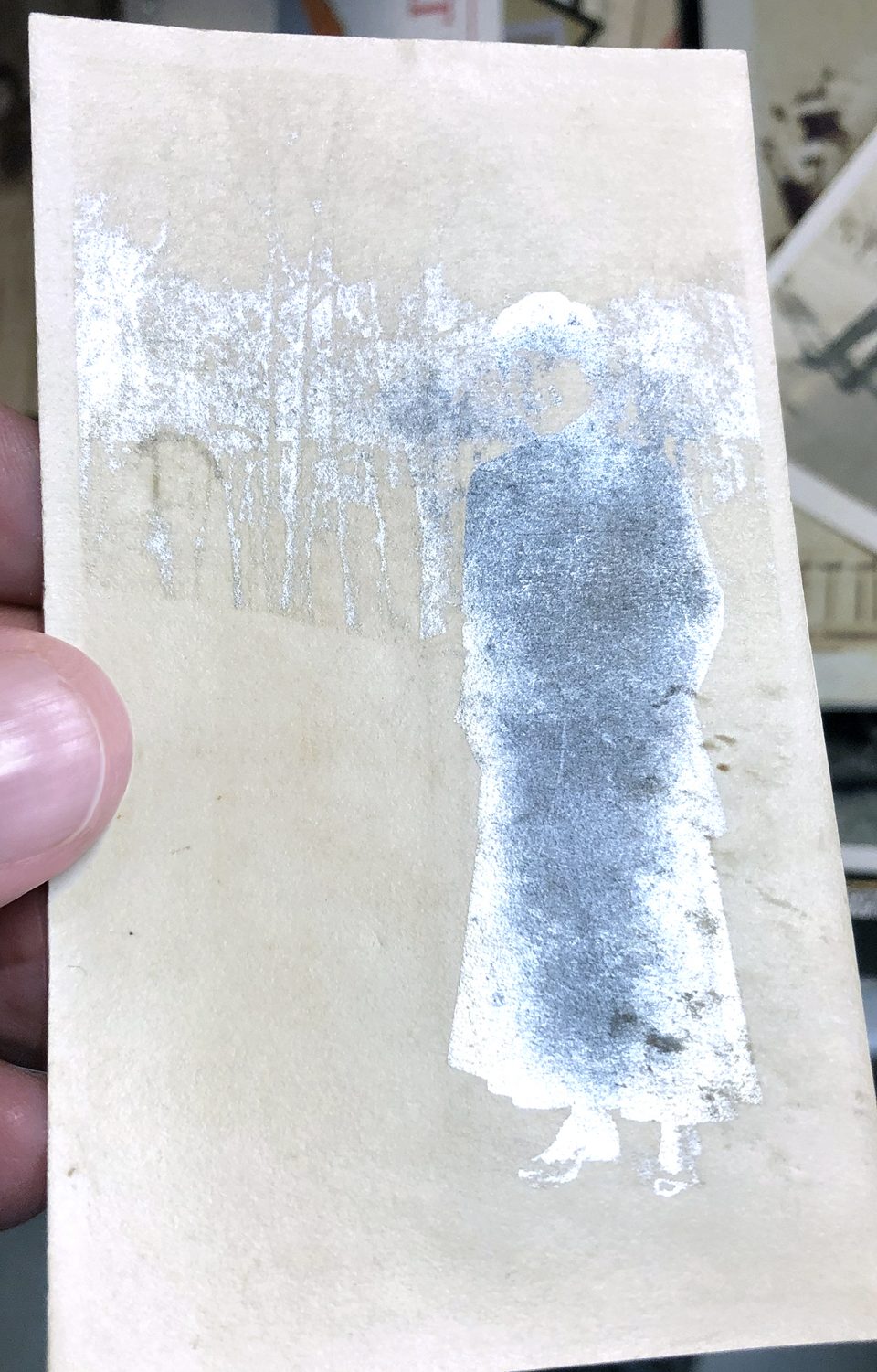
What can be done to stop or reverse silver mirroring?
You can learn more about silver mirroring at Conservation Wiki, including arguments for and against treatment of silver mirroring. Conservationists have to consider the potential damage than can be caused attempting to reverse the effects silver mirroring.
The site also includes a list of treatment methods, ranging from very basic — rubbing the surface with a pencil eraser — to much more in-depth — use of solvents and/or coatings.
Thanks for reading.
Be sure to visit me on Instagram, YouTube, or Pinterest, or on my website at keithdotson.com.
~ Keith
